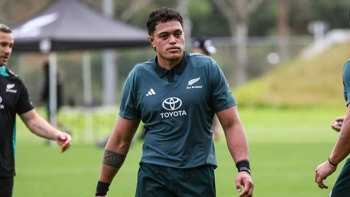
The lawyer representing double murderer David Tamihere says developments since his client was convicted, including a key piece of evidence found to be false, means other evidence that led to the guilty verdicts must be reconsidered.
He added that jailhouse informants and eyewitness accounts, the key evidence used by the Crown to convict Tamihere for the 1989 murders of Swedish tourists Urban Hoglin and Heidi Paakkonen, are dangerous forms of evidence.
Tamihere’s convictions are the subject of a Court of Appeal challenge this week - after 30 years of fervent denials by Tamihere.
This is the first time the case, which is widely accepted as one of the country’s most controversial, has been before a court since 1992. It was then that Tamihere’s first appeal failed.
He was convicted in 1990 in a trial that relied heavily on circumstantial evidence, without a murder weapon or the victims’ bodies.
Ten months after his trial Hoglin’s body was found in bush near Whangamatā - more than 70km from where the Crown alleged the murders took place. Paakkonen’s body has never been found.
In 2017 key Crown witness Conchie Harris, previously known as secret witness C, was convicted of perjury. A jailhouse informant, he gave perjured evidence that Tamihere admitted to the murders in prison.
Three years later Tamihere was granted the Royal Prerogative of Mercy and had his convictions referred back to the Court of Appeal.
Addressing the court this morning, Tamihere’s lawyer James Carruthers said those two major developments since Tamihere’s trial mean the convictions need to be reconsidered.
- David Tamihere's murder convictions will be heard by Court of Appeal again
- David Tamihere: Claims he murdered two Swedish backpackers are "ludicrous"
He suggested Harris’ evidence paired with the absence of a body may have made the jury more likely to accept other evidence - such as the two trampers who claimed they saw Tamihere with Paakkonen at Crosbies Clearing where the Crown alleged the murders occurred.
“As well as being the most important evidence the Crown had, the trampers’ evidence was the most keenly contested. They were never able to identify Heidi, and struggled to identify Tamihere,” Carruthers said.
Carruthers alleged the prosecution at the time concluded the trampers’ evidence wasn’t strong enough and needed something else to hold it up. That “something else” was jailhouse informant Conchie Harris’ testimony.
/cloudfront-ap-southeast-2.images.arcpublishing.com/nzme/CQ2UDJXXJJMJ6NCZ34BJXO3F3U.jpg)
Double murderer David Tamihere, and his victims Heidi Paakkonen (top, inset) and Urban Hoglin. Photos / NZME
He said jailhouse informants and eyewitness accounts are the most problematic type of evidence, as shown by international studies.
“Given what we know about the dangers of those two classes of evidence, that is a potent recipe for a miscarriage of justice.
“If the door is left ajar when it comes to prison informant evidence, the jury will push it open and walk through. There is a real risk that they will take a mile.”
Tamihere is not attending the appeal, telling NZME last week he will be in West Auckland mowing lawns.
The hearing is expected to last two days.
The background
In April 1989, engaged couple Hoglin and Paakkonen were trekking through dense Coromandel bush, while David Wayne Tamihere was on the run from police.
Three years earlier he had raped and threatened a 47-year-old woman in her home for more than six hours. He pleaded guilty to that offence but had ignored his bail conditions and absconded to the bush, where he was living rough.
He’d already had a prior conviction for manslaughter after hitting 23-year-old stripper Mary Barcham on the head with a rifle in 1972 when he was 18.
On April 10, 1989, Tamihere came across the Swedish couple’s white Subaru, “loaded with gear” and parked near the start of a difficult hiking track. He stole the car – something he has always admitted.
Weeks later, after the Swedes’ disappearance had sparked the largest land-based search in New Zealand history, Tamihere was linked to the car.
He was charged with their murders three months later, by which point he had already been sentenced on the earlier rape conviction he was evading at the time of the murders.
At his trial in November 1990, jailhouse informant Harris, then known as “secret witness C”, testified that Tamihere had admitted to the killings while in prison. Harris claimed Tamihere told him he’d bashed Hoglin with a piece of wood and dumped the couple’s bodies at sea. Two other inmates also testified that Tamihere had made admissions.
The other key bit of evidence came from two trampers who claimed they saw Tamihere with a blonde woman who looked like Paakkonen at Crosbies Clearing.
But it was after Tamihere’s conviction, despite the Crown having no bodies nor a murder weapon, that Hoglin’s body was discovered, 70km from the alleged murder scene.
It wasn’t enough to convince the Court of Appeal or the Privy Council that Tamihere’s case should be reheard. He spent 20 years behind bars, before being granted the Royal Prerogative of Mercy after Harris was convicted of perjury.
Ethan Griffiths covers crime and justice stories nationwide for Open Justice. He joined NZME in 2020, previously working as a regional reporter in Whanganui and South Taranaki.

Take your Radio, Podcasts and Music with you









